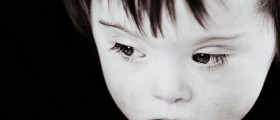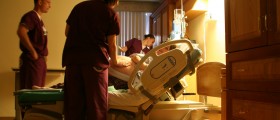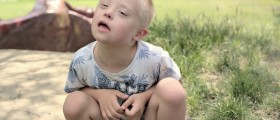
Down syndrome is considered to be one of the most common genetic disorders in humans. In the United States, on every 800 healthy babies one child is born with this problem, so there are about 6.000 new cases diagnosed every year. Down syndrome doesn’t affect the expected lifespan significantly, for most patients live more than 50 years. Statistic data says that over 85% of all cases of Down syndrome survive for longer than 1 year.
Characteristic of Down Syndrome Patients
Patients suffering from Down syndrome often have distinctive facial characteristics, including upward slant eyes, epicanthic folds on the eyes, flat nose bridge and broad face. Their ears are placed lower than in healthy people, as well as their eyes. Most of these patients have small mouth, so that the tongue looks like it is too big or sticks out of the mouth. Down syndrome is also visible on the hands, which have just one single crease.
This genetic disorder usually leads to low muscle tone, which can be seen in babies born with this syndrome. Other characteristics include certain degree of cognitive impairment and learning disability. Depending on the severity of this condition learning problems might be mild or very severe. These patients also frequently experience some heart defects and leukemia, while many of them develop Alzheimer’s disease (AD) early in life (early onset of AD).
Risks for Down Syndrome
Maternal age is found out to be only factor known so far for the development of Down syndrome. Young women have fewer chances to give birth to a child with Down syndrome, but the risk increase with aging.
At the age of 25, women may become pregnant and have a child with this syndrome only in rare occasions. The chances that something like that will happen are about 1 to 1.250. As the women ages, the risk becomes higher, so someone who wants to become a mother at the age of 30 is taking 1 to 1.000 risks to have Down syndrome child. Mothers of 35 years of age gave birth to Down syndrome children just once in 400 cases. However, for a woman over 40 years of age the risk is much higher. 1 of 100 babies born by mom older than 40 and 1 of every 30 babies of mother over 45 years of age could develop Down syndrome.
Having one child with this genetic problem already means that the second child could have Down syndrome as well, especially if one of parents has translocation of chromosome 21 or fusion of two 21 chromosomes.

















Your thoughts on this
Loading...